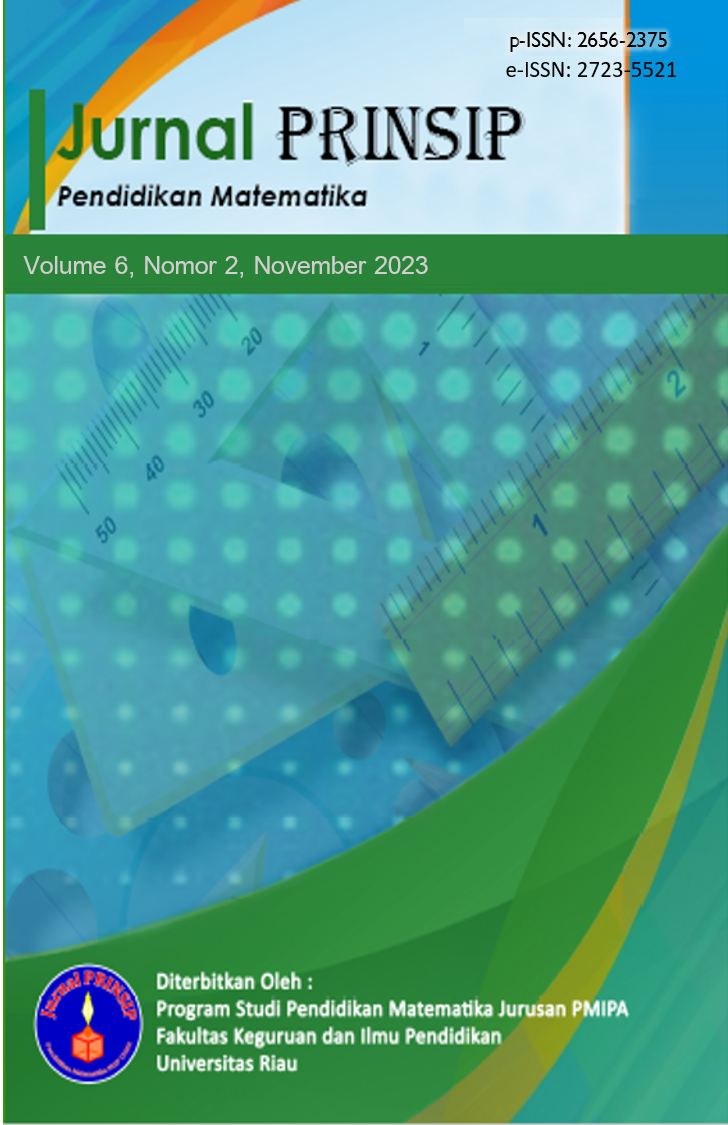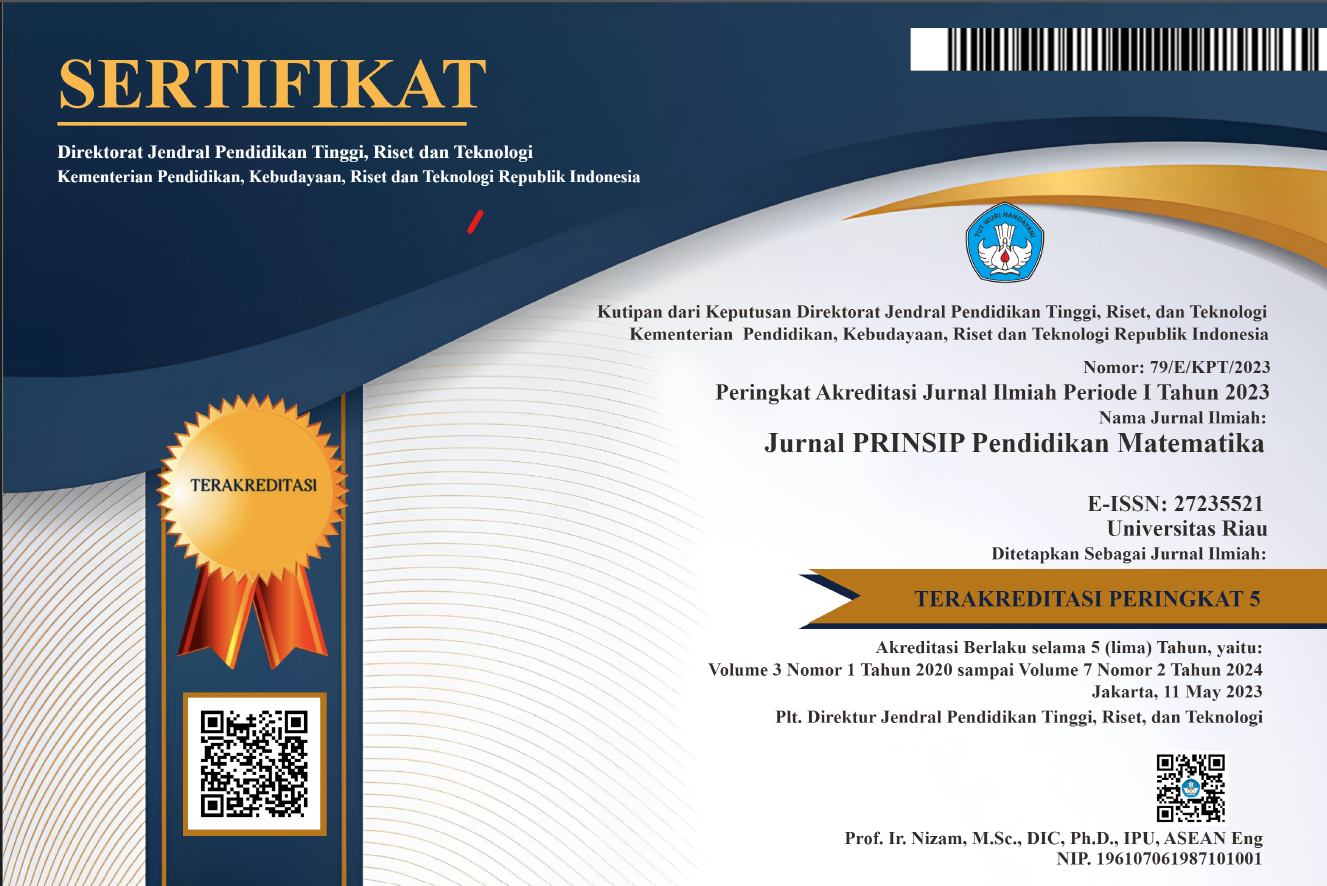LIMIT FUNCTION MISCONCEPTION IN MATHEMATICS EDUCATION STUDENTS
Abstract
The purpose of this study was to identify and analyze the types of misconceptions that occur among students of the Mathematics Tadris Study Program at IAIN Parepare who do not understand the limit of functions material. This research uses a qualitative approach with a case study type, which means processing data through the use of narration or words, is descriptive in nature, avoids the use of numbers, and focuses research on one topic. The research subjects were 18 semester II students who took the essay test. Qualitative data were analyzed using data reduction methods, data presentation, and drawing conclusions. The results of the study show several types of misconceptions experienced by students: types of classificational misconceptions, including errors in stating the nature and appropriate rules for solving problems; types of correlational misconceptions, including errors in representing the problems; and types of theoretical misconceptions, including errors in understanding the concept of limit functions. Factors causing this misconception include the students themselves, namely the inability to understand the concept of limit function; and the cause of the lecturer is the lack of emphasis given to the material. The book doesn't have a complete explanation. Friends in the class environment that do not support are influenced by context. Wrong learning methods and using language that is difficult to understand.
Downloads
References
Djafar, D., Wahyuni, E. I., & Reziyustikha, L. (2019). Analisis Kesulitan Belajar Mahasiswa Pada Mata Kuliah Aljabar Linear (Sudi Kasus Pada Mahasiswa Manajemen Informatika Akademi Manajemen Belitung). Jurnal Prinsip Pendidikan Matematika, 2(1), 29–33.
Dwirahayu, G., Kustiawati, D., & Yanti, R. A. (2018). Analisis Kemampuan Berpikir Aljabar Siswa Berdasarkan Miskonsepsi. Seminar Nasional Pendidikan Matematika Dan Matematika Universitas Muhammadiyah Tangerang: Optimalisasi Literasi Matematis Dalam Sudut Pandang Saintifik, 235–241.
Jufri, J. (2022). Miskonsepsi Mahasiswa STKIP Rokania Pada Materi Limit Fungsi. Jurnal Cendekia : Jurnal Pendidikan Matematika, 6(1), 414–422. https://doi.org/https://doi.org/10.31004/cendekia.v6i1.1200
Purba, S., & Hutagaol, Y. E. (2017). Analisis Kesalahan Konsep Siswa Terhadap Materi Limit Fungsi Di Kelas XI MIA 3 SMA Negeri 21 Medan. Jurnal Pendidikan Matematika Dan Sains, 12(2), 90–99.
Raufany, G., & Solfitri, T. (2019). Analisis Kesalahan Siswa Kelas X IPA 1 SMAN 2 Pekanbaru Dalam Menyelesaikan Soal Pertidaksamaan Rasional dan Irasional. Jurnal Prinsip Pendidikan Matematika, 2(1), 19–22.
Salirawati, D. (2011). Pengembangan Instrumen Pendeteksi Miskonsepsi Kimia pada Peserta Didik SMA. Universitas Negeri Yogyakarta.
Siregar, H. M. (2019). Analisis Kesalahan Siswa Dalam Menyelesaikan Soal Tes Kemampuan Berpikir Kreatif Matematis Materi Lingkaran. AKSIOMA: Jurnal Program Studi Pendidikan Matematika, 8(3), 497–507. https://doi.org/10.24127/ajpm.v8i3.2379
Siregar, H. M. (2023). Profil Hasil Belajar Mahasiswa Pendidikan Matematika pada Materi Sistem Persamaan Linear dan Matriks Mata Kuliah Aljabar Linear. Jurnal Pendidikan Matematika Universitas Lampung, 11(3), 193–203. https://doi.org/http://dx.doi.org/10.23960/mtk/v11i3.pp193-203
Siregar, H. M., & Solfitri, T. (2019). An Analysis of Students’ Errors in Solving Indefinite Integral Problems Viewed From Gender Differences. Journal of Research on Mathematics Instruction (JRMI), 1(1), 17–24. https://doi.org/10.33578/jrmi.v1i1.12
Widodo, S. A. (2013). Analisis Kesalahan Dalam Pemecahan Masalah Divergensi Tipe Membuktikan Pada Mahasiswa Matematika. Jurnal Pendidikan Dan Pengajaran, 46(2), 106–113. https://doi.org/https://doi.org/10.23887/jppundiksha.v46i2%20Juli.2663
Copyright (c) 2023 Jurnal Prinsip Pendidikan Matematika

This work is licensed under a Creative Commons Attribution-NonCommercial-ShareAlike 4.0 International License.





